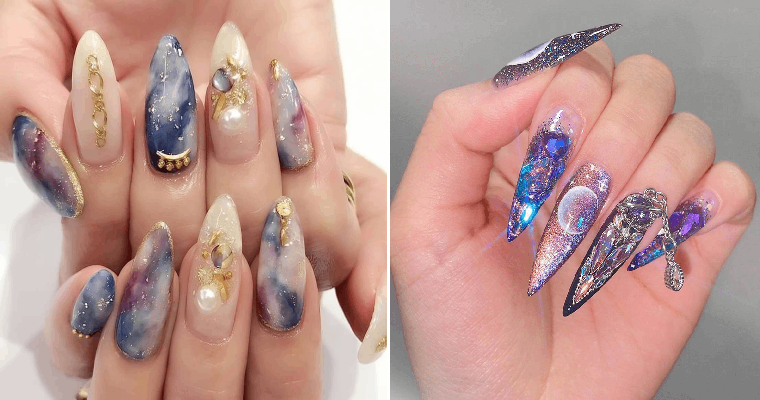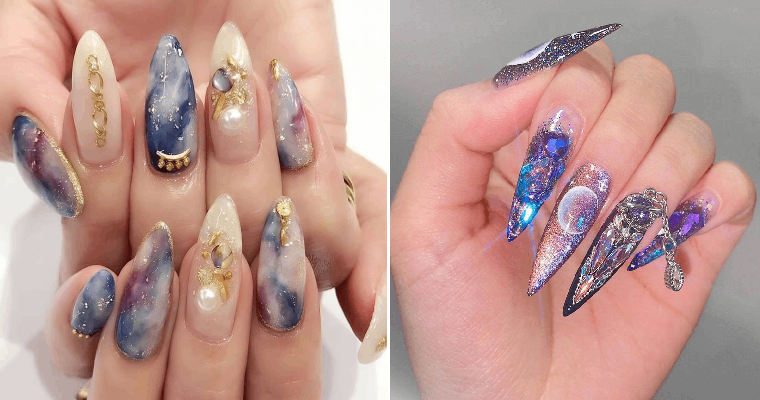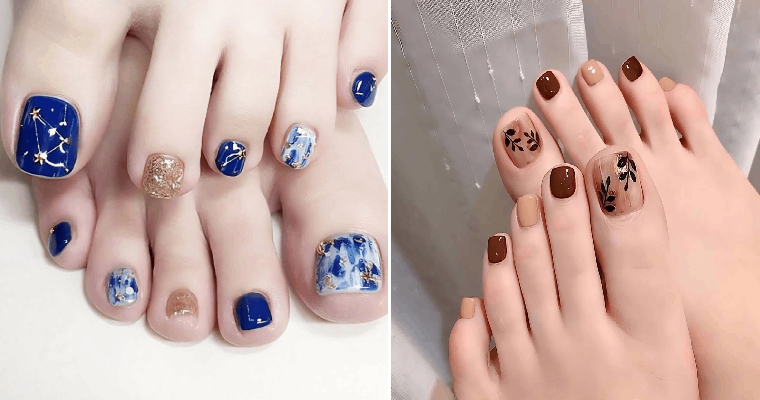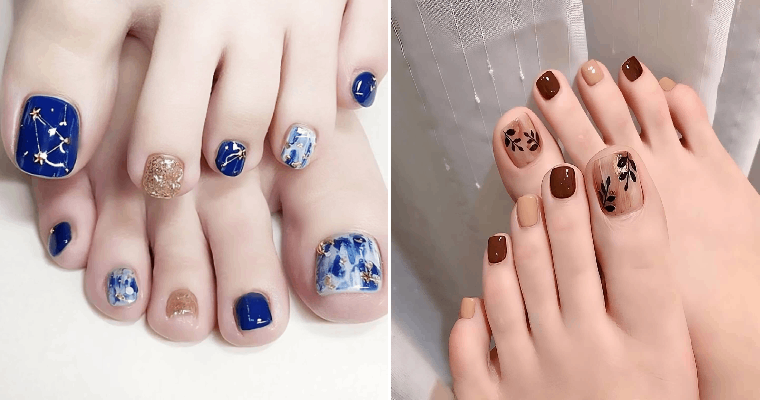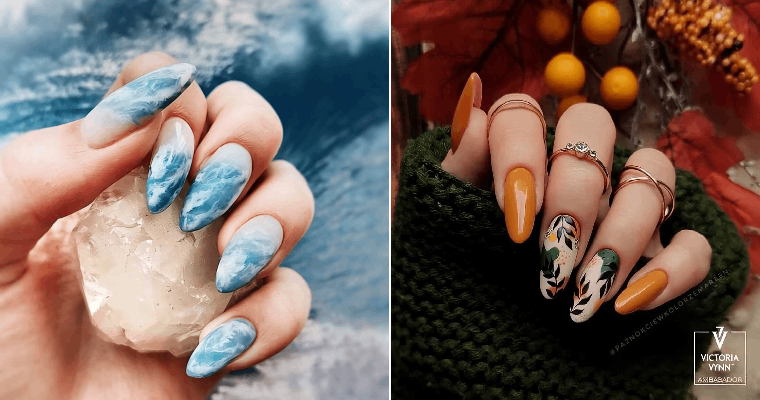Body art, like everything else, is being influenced by ’90s nostalgia – for better or for worse.

Despite tattooing‘s deep history in various cultures around the world, tattoos have been taboo for quite some time in the United States. In recent decades, the form of body modification has risen from its underground status, allowing folks to get creative with body art and, in turn, affecting the industry’s evolution and tattoo design trends.
Tattoo trends may not change as quickly as makeup or hair trends, but the popularity of certain tattooing styles and designs tends to ebb and flow. For example, tattoos of mustaches, infinity symbols, and practically anything related to the Harry Potter franchise were everywhere in the 2010s, especially on Tumblr. The Bronx, New York-based tattoo artist Julissa Rodriguez, also known as Art by Jar, tells Allure that back then you’d also come across plenty of geometrical tattoos. Minimalism and realism started gaining popularity, too, as tiny tattoos became en vogue for the first time. Additionally, Rodriguez says that “colorful tattoos definitely took a backseat and black and grey work definitely started coming back into the forefront.”
Barely anyone seems to be getting mustache tattoos anymore, but many trends for 2023 look to the past even as some techniques are pushing the industry into the future. Nostalgia is influencing the tattoo scene majorly, so plenty of designs that were popular in the 1990s are making updated comebacks.
A lot of exciting developments are happening in the industry for both tattooists and clients, making way for emerging styles that weren’t possible before. Artists are getting access to a better and wider variety of tools, including wireless guns and smaller needles that create finer lines. They are also reimagining their craft with tattoos that look like glitter alongside other colorful optical illusions. Hyperrealistic artwork continues to shrink in size, and neotraditional tattoos are rising in popularity. Ideas about who can get what type of tattoo are shifting to be more inclusive.
Here are the nine tattoo designs and styles you’ll be seeing all over social media in 2023 and beyond — if you haven’t already.
1. Neo-Traditional

American traditional tattooing will always have its fans, so it’s not going anywhere anytime soon. The style is defined by bold and clean lines, minimal shading, and vivid colors, according to Rodriguez. They add that a lot of American traditional designs tend to relate to the military or U.S. patriotism and stick to a color palette of blues, greens, reds, yellows, and of course lots of black. While American traditional tattooing has roots in the military (Norman “Sailor Jerry” Collins was, after all, an actual sailor in the U.S. Navy) the style has expanded to commonly include depictions of snakes, swallows, roses, hearts, dice, and more.
In recent years, its younger sibling, neo-traditional, has gained popularity. “The main difference between neo-traditional and American traditional comes down to the shading,” Rodriguez explains. “Neo-traditional has a more realistic, bold appearance whereas traditional work looks flat, giving them a less true-to-life appearance.” Neo-traditional work still has those same bold lines but with more dramatic shading that adds depth to the design. Sometimes neo-trad work uses similar subject material to traditional work but many tattooists have expanded beyond that, especially into pop culture.
2. Microrealism

Tiny tattoos have been popular for a few years now, so it’s not shocking to see their influence continue in 2023. Rodriguez notes that small, hyper-realistic tattoos, in particular, are showing up more on social media, particularly on Instagram and Tiktok. Tattooists are constructing detailed artwork with the smallest lines and dots possible to create work that’s sometimes no bigger than a quarter.
One of the best parts of small tattoos is that you can place them pretty much anywhere. Ultimately, consulting your tattoo artist is your best bet to figure out a location, but we think the ear and collarbone are great spots to consider. A tattoo on the ear is far more inconspicuous than one on the collarbone, for example, if you’re looking for subtlety. The hands and fingers also work, but certain areas on the hands and fingers can heal poorly and fade faster — just make sure to research the best locations and healing practices for hand tattoos before you get one.
3. Anime- and Video-Game-Inspired Tattoos

Tattoo artist Olga Szublak, who works out of High Hopes Tattoo in Queens, New York, notes that she’s received a lot of film- and video-game-inspired tattoo requests in recent years. Final Fantasy fans, in particular, seem eager to show their love for the fandom through tattoos, she shares. “I have done a lot of Final Fantasy tattoos, so that’s definitely one of the most popular games that people want,” she says.
And it doesn’t end at video games, either; anime tattoos are also rising in popularity in the United States. It’s not shocking that anime tattoos are in vogue, considering that anime overall has become a part of the mainstream in the United States in recent years. Szublak has tattooed Pokémon characters on several clients. Rodriguez has also noticed the pattern all over their Instagram feed. “I’ve been noticing a lot of artists that do anime tattoos are getting more attention,” they share. “My prediction for 2023 is that anime tattoos are going to be more on the rise.”
4. Minimalism

In the same way that small, hyper-detailed tiny tattoos will remain popular in 2023, small minimal tattoos will as well. Szublak and Rodriguez both note that they have noticed fine-line tattooing’s consistent popularity – and fine lines naturally go hand in hand with minimalism.
Rodriguez says that recently they have received lots of requests for minimalist pieces. Faceless portraits have become an increasingly popular request as well as simple bands around the arm, they share.
5. Barbed-Wire Tattoos

The ’90s influence has been clear in our fashion, beauty, and now tattoo trends with the revival of barbed-wire designs. Barbed-wire tattoos were first associated with the prison system, specifically for incarcerated or formerly incarcerated folks, according to Rodriguez. The design became popular in ’90s mainstream culture at least in part thanks to Pamela Anderson, who had the barbed-wire tattooed on her arm for the movie Barb Wire.
Those same barbed-wire tattoos are everywhere on Instagram and TikTok today, but unlike the last decades of the 1900s, they aren’t solely around the arm. Some are getting barbed wires tattooed in a heart shape while others are incorporating the spiked design into other shapes and styles all over social media.
6. Temporary Tattoos

Perhaps one of the more surprising developments in the tattoo industry is the rise of temporary tattoos — but not those cartoonish tattoos that you could get for a quarter from a vending machine. The new generation of temporary tattoos are available in far less cheesy designs that last longer and look more realistic.
Inked by Dani, Tattly, and Inkbox are two popular brands with design options that can last for a week or longer. Bic launched its BodyMark Temporary Tattoo Markers, allowing consumers to literally draw on their own temporary tattoos.
Additionally, Brooklyn-based tattoo studio Ephemeral took the meaning of temporary tattoos to a whole new level. The shop’s artists use a real tattoo gun with Ephemeral’s specialized ink, made to dissolve from the body over the course of a year. (One of the shop’s tattoos can be seen in the photo above.) Clients get the real deal tattoo experience without the permanent ink.
7. The New Flash

Rodriguez’s flash sheet from August 2022 on the left was inspired by Beyonce’s “Bigger,” one design from which can be seen on the right on Allure editor Gabi Thorne.
And now, we’ve reached the part of this list that isn’t so much about design trends as it is about important, newer developments that have made the tattoo industry more inclusive than ever. Walk into most shops and you’ll find designs plastered on the wall or displayed in a book known as flash tattoos. Traditionally, flash tattoos are pre-drawn designs intended to be tattooed within an hour — or a flash, hence the name, Rodriguez says. Many tattoo shops across the nation carry the same or similar flash designs, typically in American traditional style, for quick and easy walk-in sessions. The aforementioned Sailor Jerry created some of the most well-known flash art of all time while he was tattooing from the 1920s until he died in the early ’70s; the term is still associated with his name to this day. Swallows, anchors, and skulls are just three of the many common flash designs.
However, in the past few years, artists have created flash sheets full of original designs to show off their skills and creativity. Some of these flash sheets are based on a central theme or may only be available at certain events or on holidays. For example, on Halloween, countless artists create spooky-themed flash art that you can only receive that night. In a total reversal from flash’s original intent, some artists will only tattoo each design on a single client, so you can have a one-of-the-kind tattoo while being able to skip the consultation process. Additionally, flash designs aren’t limited to small or minimalist art; you might find larger pieces that can take two hours or more to complete among some artists’ flash options.
Rodriguez notes that they love seeing the individuality of each flash sheet, especially when they find designs that are made for LGBTQ+ folks. “I just love what’s happening now, especially with those specific designs. It’s getting to a point where [tattoo art is] just becoming more inclusive of things that we can identify with,” they share. “Especially [as a] part of the queer community, [when I see these designs, I’m like], ‘Oh my God, I love this because this is who I am and this is something I can identify with.’ I love that this is inclusive of my people and I love that my community feels that they can actually get something that they can identify with.”
8. Color

Colorful tattoos, as opposed to black and gray ones, will also be popular as ever, both Rodriguez and Szublak note. On social media, Rodriguez has noticed colorful tattoos on the rise on social media, including watercolor artwork. They anticipate seeing color incorporated in minimalist ways as well as tattoos that use just two colors.
But this isn’t just about a trend toward the rainbow. Unfortunately for brown- and dark-skinned folks, colorful tattoos haven’t always seemed like an option due to fear that the hues wouldn’t show on their complexion. Some tattoo artists have even gone as far as to claim that color doesn’t show up on darker complexions at all. By way of example, Rodriguez recalls a former colleague who refused to tattoo darker skin tones based upon the claim that darker skin scars more or doesn’t show color at all — a claim Rodriguez says he knew wasn’t exactly true.
And that’s just one example of racism in tattooing that happened behind closed doors; some artists have expressed their negative thoughts about this topic very publicly, too. On the reality competition series Ink Master, for example, contestants have been called out for their complaints of having to tattoo deep skin tones.

But, according to Rodriguez, the rise in color tests — which involve tattooing a tiny assortment of colors on a client’s skin to determine color payoff and potential allergies — has challenged that, making colorful artwork more accessible to those with deeper skin tones. “The more artists are doing color tests on their clients, [the more] clients are able to see the colors that can be done on them,” they say. “And I feel like artists need to offer these services to their clients more and more. This should be honestly the first thing offered to clients off the bat.”
9. The Reclaimation of Tribal Tattoos
So-called “tribal” tattoos, which typically featured thick, curved, abstract lines or geometric shapes tattooed on the chest and arms, were immensely popular in the ’90s and a prime example of cultural appropriation. Even the term “tribal” dilutes the meaning that tattooing and certain designs have for different ethnic groups across the world.
In fact, for some indigenous folks, their traditional tattoos were outlawed or discouraged in favor of assimilation. And while the questionable ’90s style is also making a bit of a comeback, we’re more interested in talking about the younger generation of folks who are reclaiming and highlighting their cultural tattooing practices and designs.
Model Quannah Chasinghorse, for example, has a traditional Yidįįłtoo tattoo on her chin, comprised of three lines tattooed by her own mother. Another example is Mashpee Wampanoag Tribe member Kerri Helme, who told Allure how she came to learn about the tattoo practices of her tribe and eventually learned how to tattoo herself and others. Back in September 2022, Jason Momoa shared behind-the-scenes videos and pictures of getting his head tattooed by Sulu’ape Keone Nunes, who has been reviving traditional Hawaiian tattooing, to honor his Hawaiian culture. “Our ways were stolen from us, and it’s important for us to [resurrect] certain practices and maintain them because we see how easily things can get lost in just one generation,” Helme told Allure. “I’m just practicing and preserving traditional cultural techniques, and I’m willing to teach any tribal member that wants to learn.”



